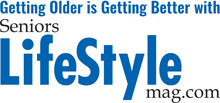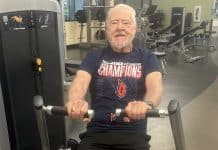I talk with a lot of women over 50, and I’m surprised that the vast majority have never tried Hormone Replacement Therapy (HRT). When I ask “Why?” they shrug their shoulders and say it’s just not for them. But they don’t know that. They don’t know the difference it could make. They have been influenced by a persistent myth that estrogen causes breast cancer. As you’re about to learn, hormone replacement therapy prevents cancer and supports healthy aging.
History of HRT
In the 1960s, HRT emerged to ease menopausal symptoms, with estrogen widely embraced by the 1990s for hot flashes and bone health. The 2002 Women’s Health Initiative (WHI) study wrongly alarmed millions by overstating risks of estrogen-progestin HRT, like breast cancer and heart disease, causing a major setback for women’s health research and trust in hormone therapy. Part of that was caused by oral estrogen pills, which are no longer used, but most of the problem was in bad data.
Although it was front-page news, later analysis of that same data debunked WHI’s flaws, and more studies continued to show HRT is safe and effective for most when started early with modern methods like creams or patches. Today, personalized HRT is a cornerstone of menopause care, with doctors tailoring doses and delivery to individual needs, underscoring the importance of early action. Still, today fewer than 6 percent of women are on HRT – one of the greatest public health failures of the last 100 years. If you want to live better for longer, talk with your urologist or endocrinologist about trying HRT.
During menopause, estrogen drops like a stone. Replacing estrogen provides huge benefits. Women on HRT are able to build more bone and muscle, reduce their risk of heart disease, and generally fight the effects of aging. Without it, women are at a disadvantage and run a serious risk of dying early.
HRT for Women in Perimenopause
Perimenopause, often in your 40s, brings irregular periods, hot flashes, and mood swings. Estrogen creams or patches can stabilize symptoms and improve sleep. There are also rings and vaginal creams. If you have a uterus, add progesterone (micronized pills or creams) to protect against endometrial issues. There is no single solution: some women feel calmer, others bloated, others irritable. In most cases, it’s best to start with estrogen first and set a good level before adding progesterone.
Stay ahead of symptoms—experiment with low-dose HRT as soon as your doctor advises. Hysterectomy patients can use estrogen alone. Discuss delivery methods with your doctor to find what works, adjusting for side effects. Delaying worsens discomfort, so start now to stay comfortable.
Women in Their 50s
Menopause in your 50s often intensifies hot flashes, vaginal dryness, and fatigue, disrupting daily life. Estrogen creams or patches (avoid oral pills) can reduce symptoms by 80% and boost mood. To prevent endometrial cancer, almost all women with a uterus should be on progesterone (micronized pills, rings, or creams). With enough experimentation, you should find a delivery method that works for you.
I want to make this clear: if you have a uterus, you should talk with a good doctor about progesterone to prevent endometrial cancer.
During menopause, symptoms and conditions can change. It would not be unusual to change your dose and delivery method at least once during this period. Stay ahead of it. Try options early, like patches for steady delivery, and pair with exercise. Some women like to inject themselves, they say it gives them much more control. Don’t settle for brain fog or fatigue. Get your HRT and get into the gym. Acting promptly keeps you vibrant.
Women in Their 60s
In their 60s, 40 percent of women face hot flashes, and vaginal dryness or urinary issues increase. Vaginal estrogen creams or inserts are low-risk and effective. Systemic estrogen (creams or patches) or progesterone (micronized pills or creams) can aid energy, but heart risks grow. Progesterone’s effects differ—some feel great, others sluggish. Women on estrogen have fewer urinary tract infections and a lower risk of several cancers.
Even without the symptoms, you may find that the added estrogen makes you feel younger, stronger, clearer, and able to do much more than you can now.
Women in Their 70s
It’s not too late to start hormone therapy. Hot flashes and vaginal dryness persist for this age group. Brain fog and fatigue are common symptoms. Vaginal estrogen creams or inserts are safe and effective. Systemic estrogen or progesterone (micronized pills or creams) is riskier due to heart and dementia concerns but may help severe symptoms. Progesterone can be calming or disruptive — you won’t know until you try it and see what works.
Starting an exercise program alongside HRT supports muscle growth, helps build bone, and promotes independence.
Women in Their 80s
In your 80s, vaginal dryness or urinary issues can reduce comfort. Vaginal estrogen creams or inserts are safe, improving intimacy and reducing UTIs. Systemic HRT is rarely started due to heart and dementia risks, but continuing prior HRT may work. Progesterone responses vary—some benefit, others don’t.
Yes, there is some risk of starting late. But there are risks to not starting. Talk with your doctor to see if HRT is right for you. If your doctor doesn’t mention the benefits, get another doctor.

Benefits of HRT plus exercise:
- Symptom Relief: Reduces hot flashes (up to 80%), night sweats, vaginal dryness (50–60% prevalence), and mood swings, improving sleep and quality of life.
- Bone Health: Lowers osteoporosis risk (50%) and fracture risk by 24–34%.
- Heart Health: Supports cardiovascular health if started early, potentially reducing heart disease risk.
- Comfort and Mobility: Enhances energy, muscle strength, and urinary health, reducing UTIs and fall risks.
- Individualized Care: Tailored options (creams, patches, inserts, micronized progesterone) suit varied responses, especially for hysterectomy patients needing only estrogen.
Risks of Not Using HRT:
- Persistent Symptoms: 40% of women in their 60s and 10–15% in their 70s endure hot flashes; 50–60% face vaginal dryness, leading to discomfort and UTIs.
- Bone Loss: 50% osteoporosis risk, with 20% bone loss in 5–7 years, increasing fracture risk (20–30% hip fracture mortality).
- Mood and Energy Decline: 2–3x higher depression risk, plus fatigue, brain fog, and reduced vitality.
- Missed Opportunities: risks like heart disease and dementia rise with age.
Testosterone for Women
Testosterone, often overlooked in HRT, can be a powerful addition for women at any age, addressing low libido, fatigue, and muscle loss. Low-dose testosterone creams or gels can boost sex drive, energy, and mood, while supporting muscle strength to reduce fall risks. It’s off-label, so work closely with your doctor to try it early, monitor for side effects like hair growth, and pair with estrogen for balanced benefits. Don’t wait—exploring testosterone can enhance vitality and confidence, especially if symptoms persist.
Summary
If you want strong muscles and bones and you don’t want cancer, it’s time to stop imagining that HRT is not for you. See your doctor to explore hormone replacement. Experiment with delivery methods to find your fit—HRT can enhance your life at any stage.
If you’re still not convinced, listen to this conversation between Dr Peter Attia and Dr Rachel Rubin. If you want an online hormone doctor, see Pema Bioidentical. I have no affiliation with either.
David Siegel is a longevity coach working with clients around the world via Zoom. Learn more at infinitegameoflife.com






















